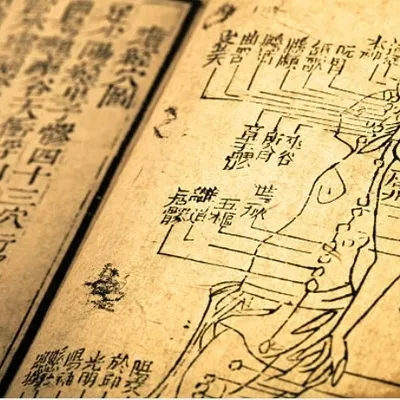Davies and Ghabbour (1999) have provided an excellent review of such theories,
but generally the accepted view is that Humic substances are produced by the condensation of various components present in the humification process such as amino acids, lignins, quiones, pectins or carbohydrates through intermolecular forces(donor-acceptor, ionic, hydrophillic and hydrophobic), although the mechanisms may vary depending on geographical, climatic, physical and biological substances (Pena-Mendez et al., 2005).


The use of Humic substances have been used traditionally as part of oriental and ancient indian Ayurvedic medicine dating as far back as 1000 BC.
The texts of Charaka Samhita and Sushruta Samhita described Humic substances from the Himalayan rocks, calling it a rasayana (rejuvenator) as well as a panacea (cure) for all disease and endowed with a capability of increasing human longevity and an adaptogen endowed with miraculous healing properties (Acharya, 1962: Sharma and Das 1988, Ghosal et al., 1995e; Agarwal et el., 2007).
Other Humic substances extracted from the Caucasus, Altai, amd Pamu mountain range have been used for over 3000 years as part of folklore medicine in the former soviet union, China, Tibet, and Greece (Frolova and Kiseleva 1996; Schepetkin et el., 2002) and has been known by the name Mumie, Mumio or Mumijo in these countries and has been popular in the treatment of bone fractures, dislocations, diseases of the skin and the peripheral nervous system and also as a soothing and anti-inflammatory agent.
Greek physicians used it as an antidote to poisons and in the treatment of arthritis and inflammation.
Aristotle studied the medicinal effects and application of Mumio and it’s medicinal use was promoted and spread by his pupil Alexandra the Great through out his empire.
Galen included Mumio as an ingredient in his famous panacea, Theriac.
The Persian physician Al Biruni recommended Mumio for traumatic injuries.
Mumio or Mumijo in Greek means ”saving body” or ”protecting organism”.
Tibetins called it Brag shun, meaning ”Mountain oil”, while in Arabic it is called Hajar-ul-musa or Arakul dzibol, meaning ”Mountain sweat”.
The Sanskrit meaning Shilajit is a ” conqueror of mountain and destroyer of weakness”
Other terms like dathuras, dathusara, shiladhatu have also been used in ancient medical texts like Sushruta samhita, Charak samhita and Rasarangini.
The word dhatu has been used simply to emphasize it’s capability as a rasayana, which increase the activity of the Saptadhatus of the body (Tewari et al., 1973) to correct functions on all systems of the body and corrects the imbalance thus giving an overall well being, reducing the stress of internal organs, effecting balanced energy, metabolism and anti-aging (Dabur Shilajit, 2007, Phillips, 1997).
It is perscribed for the treatment of genitourinary disorders, Jaundice, gallstones, digestive disorders, enlarged spleen, epilipsy, nervous disorders, chronic bronchitis and anemia (Chopra et al., 1958)
Humic substances have also been known to be useful for treating kidney stones, edema, piles, internal antiseptic, adiposity, to reduce fat and anorexia (Nadkarni, 1976) as well as fractures, diabetes, osteoarthritis and spondylosis and also being high in Superoxide dismutase.
This miraculous agent has been shown to have –
Anti-ulcerogenic, Anti-inflammatory, Antioxidant, Anti-diabetic, Anti-stress, Nootropic, Antiolytic activity, Anti-allergic, Immunodulatory activity, Anti-AIDS activity, Anti-allergic.
References
Goel et al., 1990, Ghosal et al., 1988b, Goel, 1990, Ghosal 1988, Bhattacharya et al., 1995,
Schepetkin et al., 2002, Ghosal, 2000, Tripathi et al., 1996, Kanikkannan et al., 1995,
Ghosal et al., 1991, Ghosal 1998, Ghosal et al., 1989, Ghosal, 2006
Ghosal and Bhattacharya 1992, Ghosal 1990, 1992a, b, 1998; Bhaumik et al., 1993, Ghosal 2002a .

2190 Industrial Drive , RM of Sherwood , SK , S4K 0A6
info@naturalnutrirx.com
| Cookie | Duration | Description |
|---|---|---|
| cookielawinfo-checkbox-analytics | 11 months | This cookie is set by GDPR Cookie Consent plugin. The cookie is used to store the user consent for the cookies in the category "Analytics". |
| cookielawinfo-checkbox-functional | 11 months | The cookie is set by GDPR cookie consent to record the user consent for the cookies in the category "Functional". |
| cookielawinfo-checkbox-necessary | 11 months | This cookie is set by GDPR Cookie Consent plugin. The cookies is used to store the user consent for the cookies in the category "Necessary". |
| cookielawinfo-checkbox-others | 11 months | This cookie is set by GDPR Cookie Consent plugin. The cookie is used to store the user consent for the cookies in the category "Other. |
| cookielawinfo-checkbox-performance | 11 months | This cookie is set by GDPR Cookie Consent plugin. The cookie is used to store the user consent for the cookies in the category "Performance". |
| viewed_cookie_policy | 11 months | The cookie is set by the GDPR Cookie Consent plugin and is used to store whether or not user has consented to the use of cookies. It does not store any personal data. |